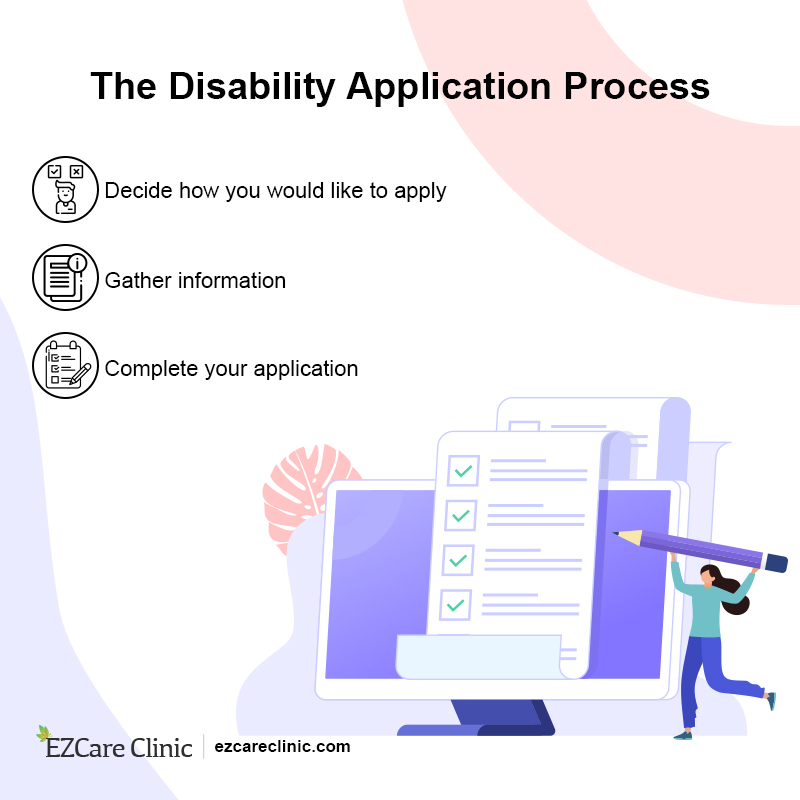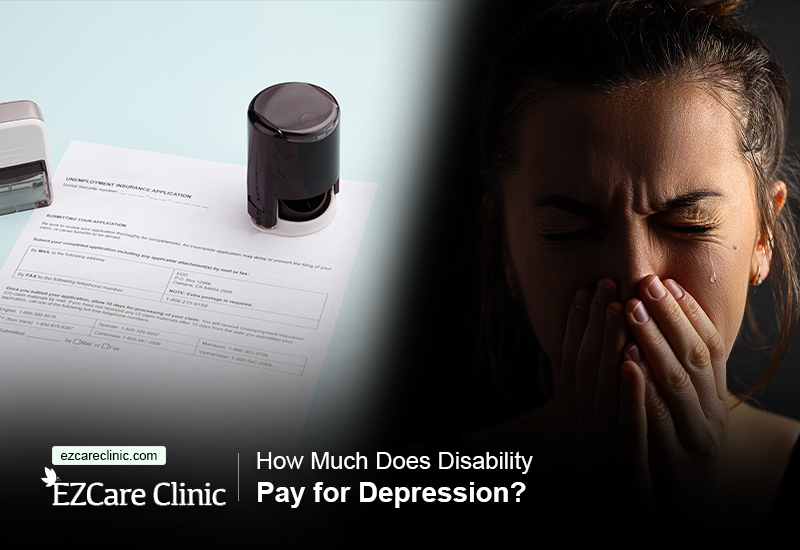Mental health disorders affect millions of Americans. The Social Security Administration recognizes some
When these conditions cause a disability, it’s difficult for the affected individuals to sustain employment.
You have more power over depression than you may think- Click below to book a consultation with our mental health expert.
Is Depression a Disability?
When faced with the question; How much does disability pay for depression, people often wonder whether depression is a disability in the first place.
Well, according to the Diagnostic and Statistical Manual of Mental Disorders, a mental disorder that causes distress or dysfunction in any area of an individual’s life functioning is a disability.
Therefore, if you’re battling a mental health disorder whose symptoms are severe enough to limit normal life activities, the illness is a disability.
Many people battle depression linked to emotionally painful situations such as divorce and the death of loved ones. Often, the periods of depression tend to be short-lived and situational.
However, if your episodes of depression are accompanied by severe symptoms that last for days on end and make it impossible to perform your daily duties, the condition is categorized as a disability.
Severe depression affects an individual’s ability to cope with daily obligations, including family and work activities.
Disability Benefits for Depression
The Social Security Administration has an impairment listing manual for conditions that qualify for disability benefits, including clinical depression.
The agency runs two programs to provide health insurance and mental illness disability living allowance to those who are unable to work due to clinical depression.
These are:
- Supplemental Social Income (SSI)
- Social Security Disability Insurance Benefits (SSDI)
To qualify for benefits, you must either be granted a medical allowance based on the severity of your depression or meet the disability criteria in the Social Security agency’s impairment listing manual.
The purpose of the impairment listing manual is to outline conditions that qualify for disability benefits, thus ensuring that benefits are granted promptly.
You must prove that you’re battling severe depression for you to qualify for either SSI or SSDI benefits.
In this regard, you must have at least five of these depression symptoms:
- Reduced interest in work and family-related obligations
- Depressed mood
- Sleep disturbance (oversleeping or insomnia)
- Appetite disturbance, resulting in a drastic change in weight (overeating or undereating)
- Feelings of guilt or worthlessness
- Difficulty thinking or concentrating
- Suicidal thoughts and feelings
- Slowing down of physical reactions and movements, including increased agitation

What Information Is Needed to Apply for Disability?
Besides exhibiting at least five of the above-mentioned symptoms, you also need to meet the “functional” criteria. This will prove that you have lost the ability to work as a result of your depression.
Typically, you must exhibit a considerable limitation in at least two of these areas:
- The ability to remember, understand and apply information
- Interacting with others (family members or colleagues)
- Persisting, concentrating, or maintaining pace when performing tasks, and the ability to complete tasks
- Managing oneself or adapting to new situations
How Much Are SSI and SSDI Payments for Depression-Linked Disability?
Before asking how much does disability pay for depression, it’s best to have some basic information about SSI and SSDI benefits and how you can qualify.
Here’s a detailed look at the programs:
Social Security Disability Insurance Benefits (SSDI)
SSDI is designed to provide an income to individuals battling disabilities resulting from depression and anxiety, and other mental illnesses.
To qualify for SSDI benefits, you must prove that you have an impairment that keeps you out of work for at least one year.
Given that severe depression has the potential to prevent you from working for a considerable period, patients qualify for SSDI benefits.
If you find yourself thinking seriously about suicide, please make an appointment with a mental health doctor before any second thoughts- Click the button below.
Generally, SSDI benefits are only available to depression patients who have worked and paid their Social Security benefits for at least five of the past ten years.
You can apply for SSDI benefits either on the Social Security Administration website or at a Social Security office near you.
Those who qualify for SSDI benefits receive an average of $1,165 per month.
Nonetheless, the amount that beneficiaries receive depends on how much tax they have paid to the FICA system during their working years.
Other key facts related to SSDI, which you should keep in mind, include:
- Spouses and children who are in high school or younger can also receive some
SSDI benefits[2] - After receiving SSDI benefits for two years, you’ll automatically qualify for Medicare benefits
- Qualifying for SSDI benefits also make you eligible for SSI benefits
Supplemental Security Income (SSI)
SSI is available under two programs. One program is for children below 18 years, while the second one is meant for adults.
SSI for Children
Children who are battling clinical depression that causes an impairment qualify for a mental illness disability living allowance under the SSI benefits program for minors.
To qualify for these benefits, they must exhibit a depression-linked impairment expected to last for at least one year.
Their depression must also have the potential to cause marked and significant functional limitations. The minor’s family should also be categorized in the low-income bracket.
Upon turning 18 years old, SSA will decide whether the beneficiaries of this program qualify for SSI adult benefits.

What Is the Process of Applying for Disability?
SSI for Adults
As the name suggests, this SSI benefits program targets adults. To qualify for a monthly allowance, you must exhibit a depression-related impairment that hinders you from working regularly and sustainably.
Besides, applicants should have a low income and less than $2,000 in assets.
Several spousal rules also come into play as far as SSI benefits for adults are concerned. For instance, married applicants must prove that their spouses also have low income and assets.
Couples that jointly own over $3,000 in assets don’t qualify for benefits.
SSI benefits average $733 per month for individuals and $1,100 per month for couples.
Nonetheless, the amount you’ll receive depends on various factors such as your living arrangements.
When applying for SSI benefits, you should keep these key facts in mind:
- “Assets” don’t include your primary residence, burial savings, and one car
- Depending on the state you reside in, you may receive an additional supplement from the state government
- SSI benefits qualify you for Medicaid coverage
- If you’ve paid enough money into the FICA system, you qualify for SSI and SSDI benefits at once
Explore options for treatment-resistant depression by clicking the button below.
Key Takeaways
Battling depression or any other mental illness is a harrowing depression. You need all the professional care and financial support you need to overcome your condition.
After learning how much does disability pay for depression, you need to be cared for by professionals.
At EZCare Clinic, we offer unmatched personalized care to patients suffering from mental health conditions.
Our specialists have in-depth knowledge in diagnosing and treating depression using proven methodologies and technologies.
Contact us to start your journey towards a healthier and better lifestyle or simply schedule an appointment with us.
Sources
- The United States Social Security Administration | SSA
Source link - Benefits for People with Disabilities
Source link

